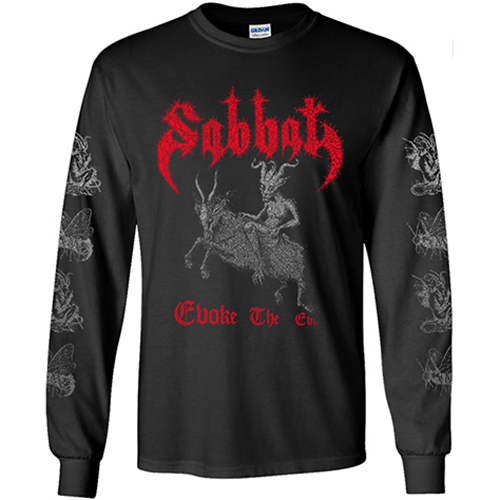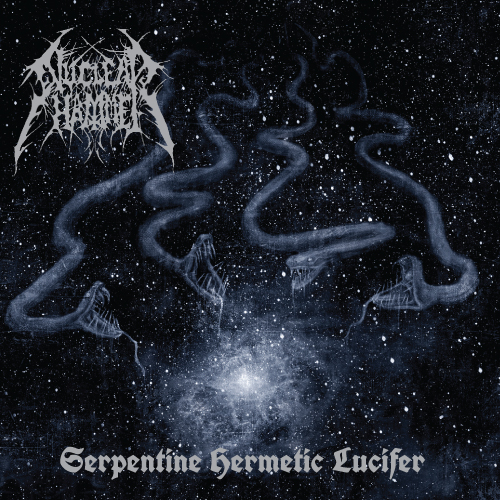Blasphemy “Blood Upon the Altar” and “Blood Upon the Soundspace” MLP Out Now
Blasphemy “Blood Upon the Altar” LP
ANTI-GOTH 398
(Description by J. Campbell)
Although Blasphemy’s recorded output was limited, its endurance over the last three decades is a testament to its originality and extremity, and it all began with the Blood Upon the Altar demo. The band’s origin was unremarkable but auspicious. In 1984, founding members Nocturnal Grave Desecrater and Black Winds and 3 Black Hearts of Damnation and Impurity, who lived near one another and were already acquainted, began playing music together, mostly working on cover songs. They soon recruited Caller of the Storms and Black Priest of the 7 Satanic Blood Rituals to complete the original lineup. After briefly adopting the name Antichrist, the band eventually settled on the simple and iconic name Blasphemy and began writing songs. They refined their sound and focused their songs during live rituals over the next several years, although the lineup would fluctuate slightly when Black Winds did a brief stint in jail, and Bestial Savior of the Undead Legions briefly assumed bass duties. Black Winds soon rejoined the fold, and Blasphemy entered Fiasco Bros. studio in 1989 with an $800 budget. They emerged having produced one of the most devastating demo recordings ever made. Blood Upon the Altar ushered in a new style of Black Metal, no less dark or evil than their contemporaries, but more confrontational, more violent. In addition to being heavily inspired by Bathory, Sodom, and Slayer, Blasphemy also drew from the punk infused Brazilian scene, especially Sarcófago, as well as Grindcore bands like Blood and Genocide (Repulsion). The resultant mixture of these influences yielded a demo that established a new standard for extremity in Black Metal, a bar that Blasphemy would continue to raise with each subsequent recording. This edition of Blood Upon the Altar marks the first time since its original release that it has been properly featured as a stand-alone album. For far too long, this demo was tacked as bonus tracks onto the end of the Gods of War album, leaving the impression that Blood Upon the Altar was of lower stature; in fact, for many, Blood Upon the Altar is the most powerful Blasphemy release of all. Additionally, many of the earlier reissue editions of this recording had long gaps between the tracks owing to an improperly prepared digital master, but that flaw has been corrected with this version, which was also remastered by James Plotkin to ensure the best possible sound. Finally, the original demo artwork once again adorns the cover of this LP, which also features a full-color gatefold. In every respect, this version—a joint release by NWN! and Ross Bay Cult—seeks to restore Blood Upon the Altar to its original status as one of the most significant Black Metal recordings of all time.
Regular Version: Black vinyl LP, gatefold jacket, 2 sided A2 poster.
Die Hard Version: Red vinyl LP, gatefold jacket, 2 sided A2 poster, patch and sticker.
Blasphemy “Blood Upon the Soundspace” MLP
ANTI-GOTH 406
(Description by J. Campbell)
Following the recent reissue campaign, NWN! is honored to present the first official release of a rarely heard 1989 rehearsal recording, Blood Upon the Soundspace. This crude open-air mic recording captures the unvarnished vigor of Blasphemy in a way that the contemporaneous studio recordings cannot. The rehearsal took place in Blasphemy’s practice space sometime following the release of the Blood Upon the Altar demo as the Desecraters were writing material that would later appear on the 1990 debut LP, Fallen Angel of Doom. Four of the five tracks feature songs that would be recorded for the album, with “War Command” being the only exception. The live performance of these tracks in the band’s rehearsal space is devastating and showcases a side of Blasphemy that many have never previously heard. The unified front of the instrumentation—the blunt force of Black Winds’ bass assault, the wicked precision of Black Priest’s rhythm guitar, Black Hearts’ furious drumming—is undeniably powerful. Black Winds’ raw vocals, raspier than on the studio recordings, drive the intensity of the performance, while Caller’s renegade solos are characteristically unhinged and frantic. The band only produced a handful of these rehearsal tapes for distribution to close associates. This version of the recording is taken from a tape Black Winds sent to Metalion (Slayer Magazine) in May of 1989—one of the only known extant copies—and is newly mastered by James Plotkin to enhance the audio where possible. (Note that the first track, “Darkness Prevails,” is noticeably more distorted than the rest of the recording.) To maintain the authenticity of this release, the cover features original artwork created in 1988 by Black Priest and screenshots taken from a video recording at the Blasphemy rehearsal space during the same era.
Regular Version: Black vinyl LP with etching on side B, jacket.
Die Hard Version: Red vinyl LP with etching on side B, jacket, patch and sticker.












